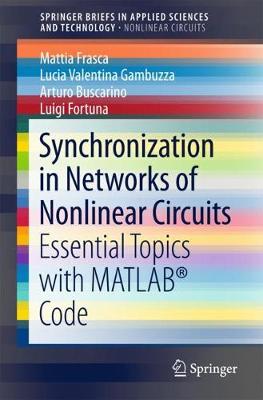SpringerBriefs in Applied Sciences and Technology
2 total works
A Concise Guide to Chaotic Electronic Circuits
by Arturo Buscarino, Luigi Fortuna, Mattia Frasca, and Gregorio Sciuto
This brief provides a source of instruction from which students can be taught about the practicalities of designing and using chaotic circuits. The text provides information on suitable materials, circuit design and schemes for design realization. Readers are then shown how to reproduce experiments on chaos and to design new ones. The text guides the reader easily from the basic idea of chaos to the laboratory test providing an experimental basis that can be developed for such applications as secure communications.
This brief provides introductory information on sample chaotic circuits, includes coverage of their development, and the "gallery" section provides information on a wide range of circuits. Concise Guide to Chaotic Electronic Circuits will be useful to anyone running a laboratory class involving chaotic circuits and to students wishing to learn about them.
Synchronization in Networks of Nonlinear Circuits
by Mattia Frasca, Lucia Valentina Gambuzza, Arturo Buscarino, and Luigi Fortuna
This book addresses synchronization in networks of coupled systems. It illustrates the main aspects of the phenomenon through concise theoretical results and code, allowing readers to reproduce them and encouraging readers to pursue their own experimentation.
The book begins by introducing the mathematical representation of nonlinear circuits and the code for their simulation. This is followed by a brief account of the concept of the complex network, which describes the main aspects of complex networks and the main model types, with a particular focus on the code used to study and reproduce the models.
The focus then shifts to the process through which independent nonlinear circuits that follow different trajectories without coupling share some properties of their motion: synchronization. The authors present the main techniques for studying synchronization in complex networks, including the major measures, the stability properties and control techniques. The book then moves on to advanced topics in synchronization of complex networks by examining forms of synchronization in which not all the units share the same trajectory, namely chimera states, clustering synchronization, and relay and remote synchronization. Simple codes for experimentation with these topics and control methods are also provided. In closing, the book addresses the problem of synchronization in time-varying networks.

